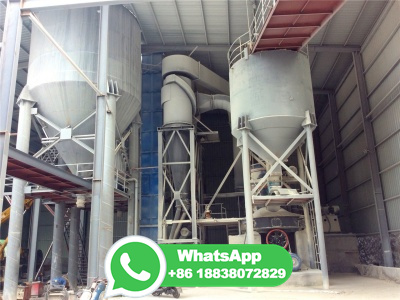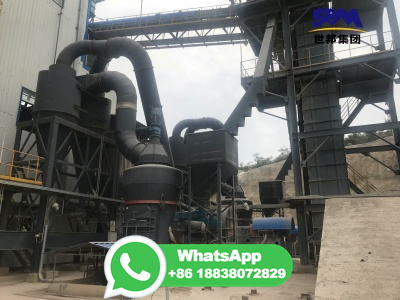
The first thing is its price. Charcoal costs a lot less than coal. It's cheaper to buy a bag of charcoal than a bag of coal . The second thing is the weight. Coal is heavier than charcoal, so you have to carry a lot of coal . Coal can be heavy and expensive, so a bag of coal can weigh as much as your backpack. The third thing is the taste.
WhatsApp: +86 18203695377
Using charcoal to make iron was a processes that came to America from England. By the 1770s, when Hopewell Furnace began making iron, charcoal was the only fuel available. The 19th century, however, brought experiments in the process through the use of anthracite or "hard" coal in place of charcoal. In 1837 a Pennsylvania furnace was successful ...
WhatsApp: +86 18203695377
Using copper foil, glass containers and a conventional microwave oven, University of Wyoming researchers have demonstrated that pulverized coal powder can be converted into highervalue ...
WhatsApp: +86 18203695377
The Energy Information Administration estimates (as of October 2022) that in 2021, CO 2 emissions from burning coal for energy accounted for about 20% of total energyrelated CO 2 emissions and for nearly 60% of total CO 2 emissions from the electric power sector. In the past, fly ash was released into the air through the smokestack ...
WhatsApp: +86 18203695377
Prepare the wood: Find dry coppiced firewood that is about 1 to 3 inches in diameter. Remove the bark and cut the wood into uniform pieces. Build a charcoal kiln: You will need a metal can with a lid and some ventilation holes. Fill the can with the prepared wood pieces, making sure not to pack them too tightly.
WhatsApp: +86 18203695377
This is perhaps the easiest way to make charcoal. The direct method is to make a fire in a container, then add wood to it. Once it is burning, you cover the container loosely with a metal sheet to restrict the air. Watch as white smoke and steam from the wood comes out of the gaps around the cover. When it turns to a blue coloured smoke, any ...
WhatsApp: +86 18203695377
How coal is formed. Coal is formed when dead plant matter submerged in swamp environments is subjected to the geological forces of heat and pressure over hundreds of millions of years. Over time, the plant matter transforms from moist, lowcarbon peat, to coal, an energy and carbondense black or brownishblack sedimentary rock.
WhatsApp: +86 18203695377
The term carbonisation is also applied to the pyrolysis of coal to produce coke. Efficiency in carbonisation. The carbonisation stage in the charcoal making process is the most important step of all since it has such power to influence the whole process from the growing tree to the final distribution of the product to the user.
WhatsApp: +86 18203695377
What You'll Need. Supply of Hardwood: Oak, walnut, ash, and fruitwoods are good. Old hardwood shipping crates are good source. Don't use softwoods like pine or cedar—they won't burn long enough ...
WhatsApp: +86 18203695377
1) Formation in Earth's Mantle. Geologists believe that the diamonds in all of Earth's commercial diamond deposits were formed in the mantle and delivered to the surface by deepsource volcanic eruptions. These eruptions produce the kimberlite and lamproite pipes that are sought after by diamond prospectors. Most of these pipes do not contain ...
WhatsApp: +86 18203695377
Coal vs Charcoal. Coal is a fossil fuel primarily made of carbon, while charcoal is produced by burning wood in a lowoxygen environment. While coal has a higher energy content and burns at a higher temperature, charcoal is considered a more sustainable fuel source with lower environmental impacts. They appear in amorphous shapes and look similar.
WhatsApp: +86 18203695377
Coal is a combustible black or brownishblack sedimentary rock, formed as rock strata called coal is mostly carbon with variable amounts of other elements, chiefly hydrogen, sulfur, oxygen, and nitrogen. Coal is a type of fossil fuel, formed when dead plant matter decays into peat and is converted into coal by the heat and pressure of deep burial over millions of years.
WhatsApp: +86 18203695377
Christoffer A. Masia et al. Converting raw coal powder into polycrystalline nanographite by metalassisted microwave treatment. NanoStructures NanoObjects, 2021 DOI: /
WhatsApp: +86 18203695377
Here's how: Create a fire: Place the metal container on top of the heat source and start a fire. You can use wood, charcoal, or other combustible materials to create the fire. Add the coconut shells: Once the fire is going, add the coconut shells to the container. Make sure the shells are packed tightly and cover the container with the lid.
WhatsApp: +86 18203695377
The waste is carbonized using a simple kiln and then crushed and held together with a binder and formed into briquettes. These briquettes are a more efficient and ecofriendly alternative With the task at hand; to improve the charcoal making process, we formed our problem statement Design a
WhatsApp: +86 18203695377
The process includes numerous steps: The pit, or hearth, is cleared of vegetation and made as level as possible. An 18foot green pole of wood, called a "fagan" is driven into the ground at the center of the hearth. A threecornered chimney with an 8inch opening is built around the fagan.
WhatsApp: +86 18203695377
1 Locate an area where you can build an outdoor fire. You may be able to do this in your backyard, or you may need to secure a different site with a permit. Check your city's ordinances on outdoor fires. 2 Get a metal drum. This is the container into which you'll put the wood.
WhatsApp: +86 18203695377
The first step is to put the coal in a crushing machine to turn it into a fine powder. Next, the powder is placed in a container called a retort where it is heated to about 2,700 degrees Fahrenheit. This causes the carbon in the coal to turn into gas. The gas is then cooled and condensed into a liquid.
WhatsApp: +86 18203695377
Coal and charcoal are carboncontaining compounds. Coal is a sedimentary rock. It is primarily composed of carbon, along with trace amounts of some other elements such as hydrogen, sulfur, and nitrogen. ... Coalification is the process by which plant matter is converted into coal of increasingly higher rank, with anthracite as the final product ...
WhatsApp: +86 18203695377
Carbonization, which is part of the wood charcoal making process, is the process of converting wood into coal. As long as you have a machine that will allow you to complete this process, and ample access to the organic material that is necessary, you can create a very lucrative business with these machines that are available.
WhatsApp: +86 18203695377
Activated charcoal. Lump charcoal. The density of the charcoal is around 25% of the original wood and its average density is around 10% of the coal. You will need 10 times more charcoal than coal to produce the same amount of heat. Based on the above information, some of the key differences between coal and charcoal are as follows:
WhatsApp: +86 18203695377
Charcoal is made from logs at a wood burner, with one logs producing one bar of charcoal. Coke comes from processing a either Bituminous Coal or Lignite in a smelter, consuming one unit of fuel and one unit ore, and producing five (if using lignite) or nine (if using bituminous coal) bars of coke. If you have lignite and/or bituminous coal ...
WhatsApp: +86 18203695377
The process is used heavily in the chemical industry, for example, to produce ethylene, many forms of carbon, and other chemicals from petroleum, coal, and even wood, or to produce coke from coal. It is used also in the conversion of natural gas (primarily methane ) into hydrogen gas and solid carbon char, recently introduced on an industrial ...
WhatsApp: +86 18203695377
The government's promise also excludes socalled captive coal—plants that power industry rather than feed into the grid. Indonesia is one of the world's top coal producers, and is heavily ...
WhatsApp: +86 18203695377
In industrial chemistry, coal gasification is the process of producing syngas—a mixture consisting primarily of carbon monoxide (CO), hydrogen (H 2), carbon dioxide (CO 2), methane (CH 4), and water vapour (H 2 O)—from coal and water, air and/or oxygen.. Historically, coal was gasified to produce coal gas, also known as "town gas".Coal gas is combustible and was used for heating and ...
WhatsApp: +86 18203695377
charcoal, impure form of graphitic carbon, obtained as a residue when carbonaceous material is partially burned, or heated with limited access of air. Coke, carbon black, and soot may be regarded as forms of charcoal; other forms often are designated by the name of the materials, such as wood, blood, bone, and so on, from which they are derived ...
WhatsApp: +86 18203695377